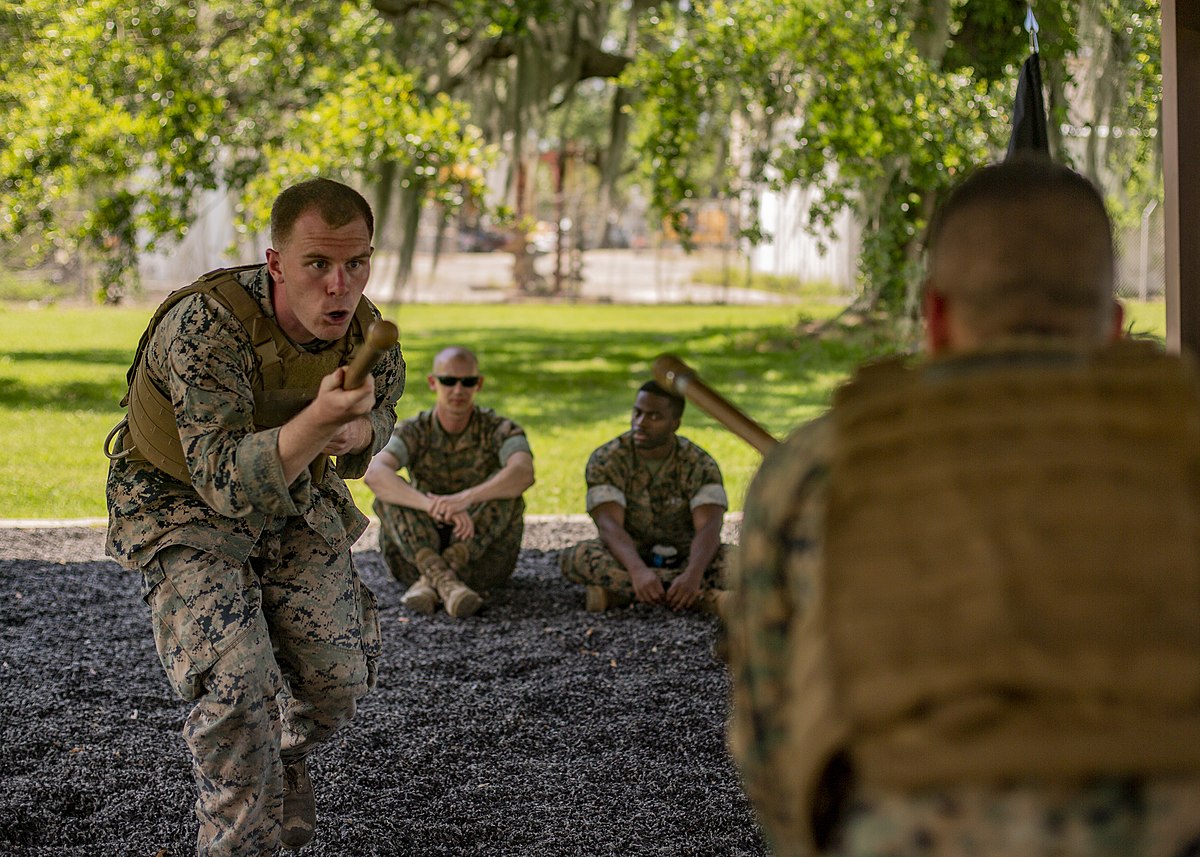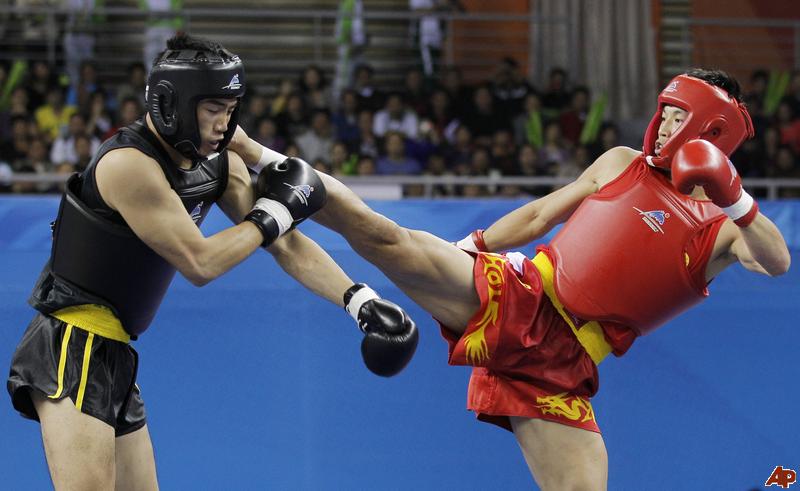Imagine that you’re at war. Enemy combatants downed your plane, and in the fray, you lost your rifle. You’re stuck in the jungle, surrounded by foes, with no weapon to defend yourself except your bare hands.

This is the exact situation that military martial arts were designed for. Military leaders know that losing one’s weapon in combat is a real possibility, and without close-quarters battle (CQB) training, death is inevitable. That’s why soldiers worldwide are trained extensively in hand-to-hand combat.
Want to learn how the best of the best get things done on the battlefield? Whether you’re a history buff or a martial arts fan, this guide to military martial arts is for you.
Combatives Used Around the World
It might surprise you to know that there isn’t a single one-size-fits-all military martial arts program used around the world. Militaries in different countries have their own styles of fighting, some of which focus on chokes and throws, while others are more centered around the use of weapons.
Below, we’ll go over some of the most common and interesting martial arts programs used by militaries worldwide. Who knows, maybe you’ll find a new favorite!
USA: Marine Corps Martial Arts Program (MCMAP) and SCARS

Developed by the U.S. Marine Corps, the MCMAP highly resembles MMA (mixed martial arts) and features a blend of 17 different combat styles, including Muay Thai, Brazilian jujitsu, and wrestling. Marines in the program learn grappling, throws, chokes, defensive maneuvers, and bayonet techniques. They also learn how to make use of objects in the environment, such as broken glass and bottles, that can be turned into weapons.
The MCMAP features five belt levels: tan, gray, green, brown, and black. Marines are taught punches, body strikes, chokes, and counters at the most basic level. Those who reach black-belt status learn knife techniques, gun counters, sweeping hip throws, and how to use improvised weapons.
It’s worth mentioning the Special Combat Aggressive Reactionary System (SCARS), which saw prevalent use in the 1980s and 90s. SCARS was a program taught to U.S. Navy Seals decades ago. Rather than merely teaching combat techniques, the program also focused on psychological survival in life-or-death situations. One of the main principles of the program was teaching soldiers how to eliminate fear.
SCARS taught that because all human bodies react in the same ways to certain injuries, it would be possible to create an automatic reaction in an opponent to shift the tides of combat in one’s favor.
Interestingly, the company that developed SCARS brought its techniques to the public via video programming in 1993, earning a distinction as the costliest defense videos that had ever been produced.
The SCARS system was canceled in 1998, after which the Navy began implementing MMA into its combat training.
Russia: Sambo

Developed in the 1920s, sambo is a Russian style of military martial arts that translates to “self-defense without weapons” in English. There are two types of sambo: sport and combat. Sport sambo shares the most similarities with judo and wrestling, while combat sambo has close ties with MMA. It involves kicks, punches, grappling, and joint locks.
Sambo features three unique techniques that set it apart from other fighting styles. The first of these is the casting punch, which allows the fighter to grab hold of their opponent if the punch happens to miss.
Then there’s the knee bar, a grappling technique used to force opponents to the ground in submission. Lastly, the leg lock is a technique fighters use to lock their opponent’s leg in place, preventing them from moving.
Thailand: Lerdrit

Lerdrit, also called Muay Leer Rit, is a military martial arts style mostly used by the Royal Thai Army. It’s similar to the Muay Thai style, but because it’s designed for combat, it ignores the safety rules traditionally followed by civilians.
Lerdrit is interesting in that it was used by Siamese warriors on South Asian battlefields centuries ago. Although the style has changed somewhat today, it still employs many of the same techniques that ancient warriors used to smite their enemies in years past.
Lerdrit is an extremely aggressive style that focuses on attacking opponents using one’s “nine natural weapons,” which include the feet, hands, elbows, knees, and head. It’s based on the four ancestral strategies of Tap (crush), Tum (throw to the ground), Chap (grab), and Hak (break the joints).
Israel: Krav Maga

If you’re a true martial arts buff, you’re probably already familiar with Krav Maga, a fighting style that focuses on finishing a fight as quickly as possible. Because of this, fighters are trained to aim their attacks at the body’s most sensitive and vulnerable parts, such as the groin and eyes.
Krav Maga is a popular fighting style enjoyed by millions in the US and primarily used by the Israeli Defense Force in combat. The technique was founded in the 1940s by a man named Imrich Lichtenfeld.
Imrich learned to fight in the streets as a means to defend his neighbors from bloodthirsty fascist gangs. After fleeing Nazi occupation, he arrived in Palestine, where government leaders recognized his street smarts and combat expertise. After Israel’s establishment in 1948, he began teaching Krav Maga to soldiers at the IDF School of Combat Fitness.
It’s worth noting that some elite Israeli soldiers use a more hardcore style of Krav Maga called KAPAP, which is an acronym for Krav Panim el Panim (face-to-face combat). KAPAP includes a blend of styles, including karate, judo, and wrestling. Practitioners also learn how to fight with knives, sticks, and clubs.
The Philippines: Kali

Kali originated in the Philippines, but today, it’s used by militaries and police forces around the world. You might also see Kali referred to as “Eskrima” or “Arnis.” It’s unclear where exactly Kali was formed and how. It’s thought that early practitioners of the style were peasants who lacked the education to make a written account of their training.
While Kali includes unarmed combat techniques, it largely focuses on knives, sticks, blades, and improvised weapons. One variant of Kali is Pikiti Tersia, which primarily focuses on live blade drills and footwork.
China: Sanshou

Sanshou, or Sanda, is a Chinese fighting system that translates to “free fighting” or “free hand.” Developed by the Chinese military, it features full-contact kickboxing, wrestling, takedowns, throws, and rapid punches and kicks.
Sanshou was originally employed by the Kuomintang at Whampoa’s first modern military academy in the 1920s. It was later adopted by the Chinese People’s Liberation Army.
Military Sanshou is a bit different from the type adapted for combat sports enjoyed by civilians. It focuses on the four main martial arts techniques:
- Da, or upper-body strikes, including fists, open hands, shoulders, elbows, and the head
- Ti, or lower-body strikes, including kicking and stomping
- Shuai, or throws
- Chin-na, or seizing, including joint locks and strangulation
Celebrate Your Favorite Military Martial Arts Style With a Commemorative Coin From Embleholics

Now that you’ve learned about these exciting military martial arts styles, why not show appreciation with one of our custom commemorative coins? Our coins are the perfect way to share your love of combat sports with others.
To learn more or get a quote for custom coins, call Embleholics at (888) 657-2511.

